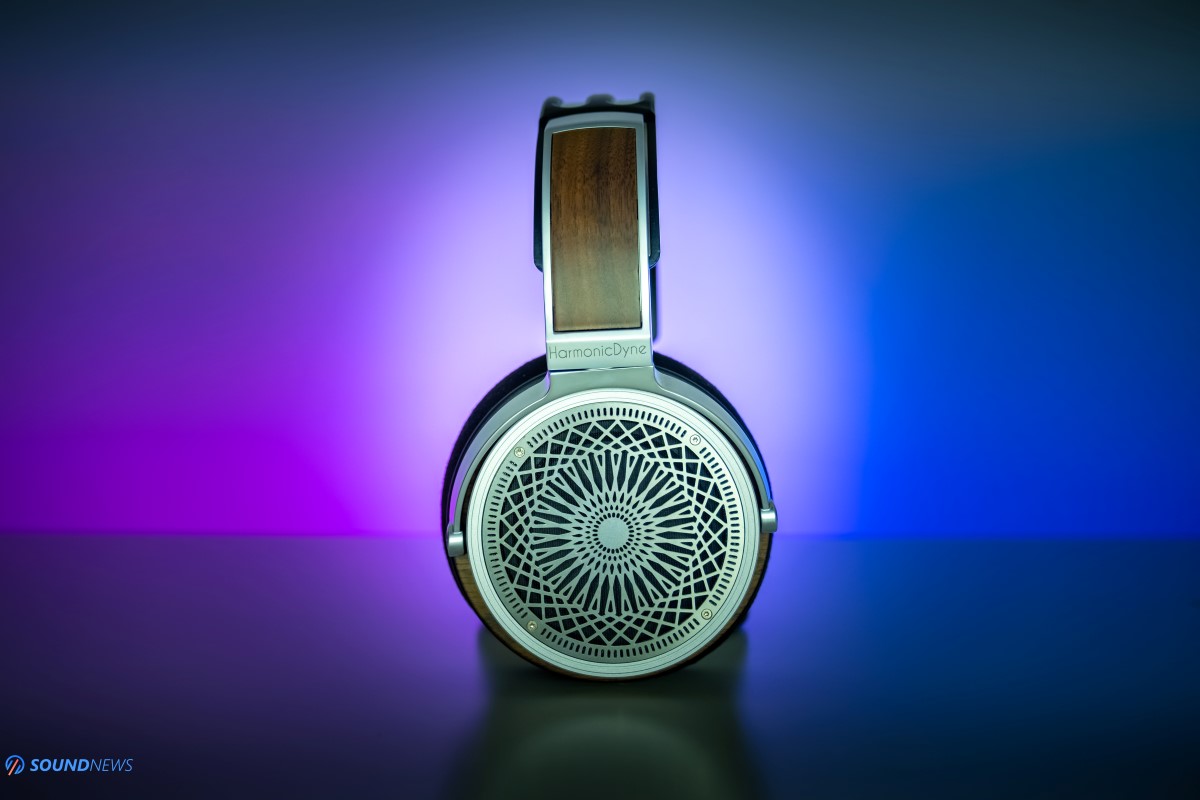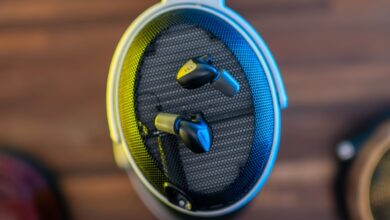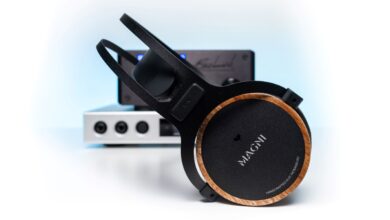HarmonicDyne Zeus Review

My Video Review:
In the spring of 2020, the world has gone crazy, everything turned upside down for most of us, we forgot what traveling and socializing really means, exchanging all that goodness with a place in the boring Helheim (lockdown). There were also glimpses of light as most of my favorite bands got back together in their studios, started jamming, hardworking and releasing plenty of good sounding albums which I’ve mentioned in several articles of mine. Some audio tinkerers around the globe released plenty of new gear to play with and sincerely it wasn’t that bad from the perspective of a music lover. In the same period a new headphone brand came to the surface and that was HarmonicDyne coming from the Middle Kingdom. Early days of a fresh new company are not the brightest, a healthy kick-start is always needed to start the engine and keep the momentum going. Their first Indiegogo campaign was quite successful and 598 people backed-up their first ever headphone, the bringer of light in humble beginnings, the sun god Helios itself.
If you are wondering why going for the Greek Mythology, it’s really quite simple: Kennerton, Schiit Audio, Nordost and others already embraced the Norse Mythology in full force so it was a logical move going for the Greek Mythology instead.
Months passed, lessons have been learned, they went back to the drawing board and decided releasing a flagship headphone establishing themselves as a serious headphone manufacturer among others. The king of the gods of Mount Olympus was revealed soon after, the Zeus itself in the shape of a beautiful headphone. While I never tried the Helios, I already see plenty of improvements in terms of packaging, accessories, materials, build quality and of course acoustics. Zeus is priced at only $350 and let’s find out together if they are worth it or not.
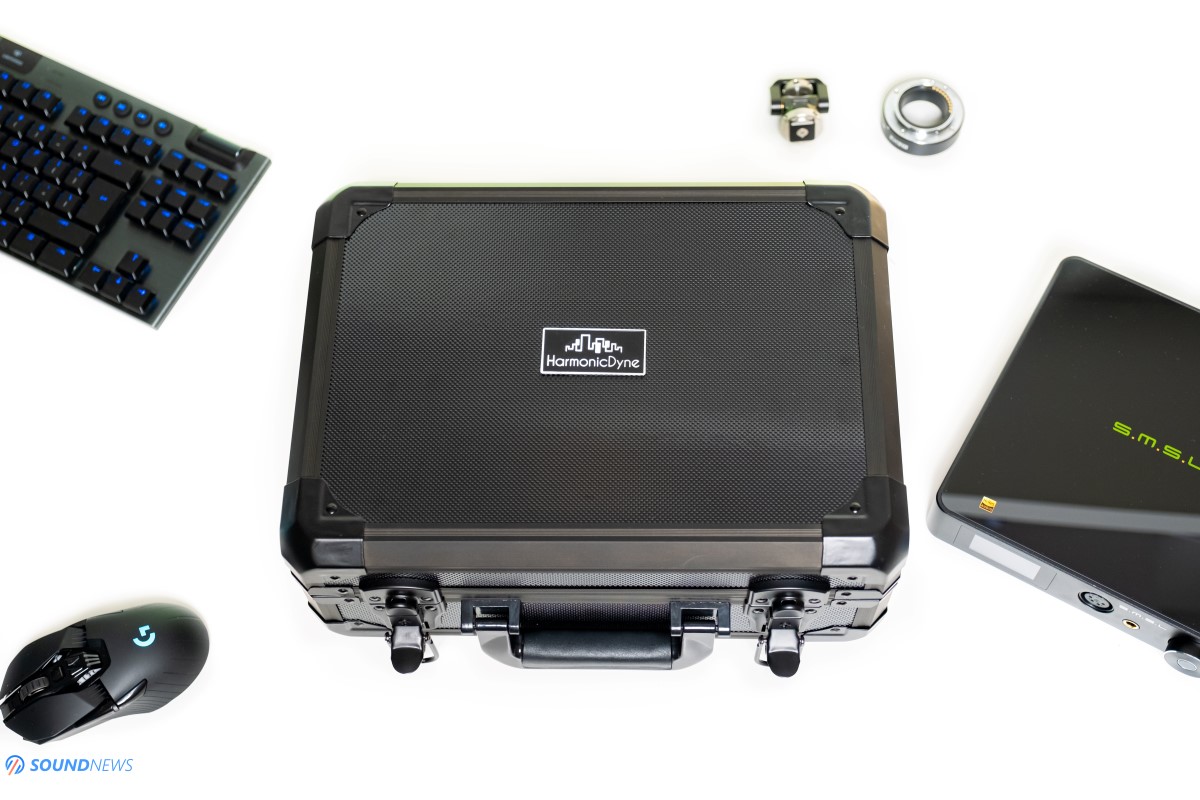
Unboxing Experience
I didn’t expect them to come in a big metal case with plenty of foam inside for extra protection. Think about Pelican cases that Audeze is using with their flagship headphones, it looks mostly the same with the plastic exterior being exchanged with a thin metal body. The case has even two keys that will lock it, just in case you’ll travel with them around and that’s something new. Every Zeus headphone is having a serial number stamped on the headphone itself and o a metal plate in that carry case – that’s a small thing but adds a bit of uniqueness and value to the whole package. The unboxing experience is top-notch and I wish more headphone manufacturers would give a much higher importance to that, instead of a display case some are putting with their headphones, a travel case is a whole lot cooler and more practical to use. Besides the headphones themselves surrounded by lots of foam, on the right there is an accessory box that contains a user manual in English and Chinese, a small 3.5mm to 6.35 mm headphone adapter and a headphone cable.
Another big surprise was the cable itself, it’s thick, with a strong and durable outer jacket, with sturdy metal connectors and of course the conductors themselves are of the highest quality. It really looks like a custom cable you would buy separately; it looks hand made it screams high-quality to me. HarmonicDyne didn’t spare a dime on the cable conductors, high-purity Ohno-Continuous-Cast (OCC) copper was used in here and I don’t see the point of using third party cables with this one, as the stock one is already top-notch.

Build Quality & Looks
There is very little plastic on top of the headband and the rest is made out of stainless-steel, walnut wood, eco leather and velour. At 380 grams with a dynamic driver inside, Zeus is slightly on the heavier side of things and while holding it, it gives an impression of a well-made and well-engineered product. Build quality wise, it will put to shame most headphones in the same price bracket, put it near a Hifiman Sundara and everything will be clear from the get-go. I don’t think there is much to complain about these build-quality wise at $350.
I personally like their headband and adjusting mechanism, it looks sleek, has a slim profile, it reminds me a little about Sennheiser HD800. The earcup holders are made out of stainless-steel, but those are filled with some kind of foam, just to keep the weight down as much as possible. Its earcups were carved from walnut wood, its durable, sturdy and has good acoustic properties. There are several headphone manufacturers using this type of wood and knowing that my Meze 99 Classics are more than 2 years old without marks in its wooden cups, I’m pretty sure this one should resist the same amount of use and abuse at my battle-station near several headphone setups.
HarmonicDyne went with a 100% symmetrical design which I already encountered in multiple headphones, Slovenian Erzetich-Audio and OLLO Audio are also using symmetrical designs with all their headphones. The headphone connector is directed to your shoulders, but considering their slim profile I don’t think this design decision would pose a problem for anyone. I’m 1.91 m tall (6’ 3”) and for me they weren’t a problem at all even with a third-party custom cable that has longer 3.5mm connectors. I like that they didn’t went with a lacquer glossy finish on the earcups, as in time scratches and marks would be seen on that kind of surface. The headphone drivers are leaned forward for a few degrees, very reminiscent of Beyerdynamic T1 and T5 headphones, that should improve the waveguide travel to the eardrums.
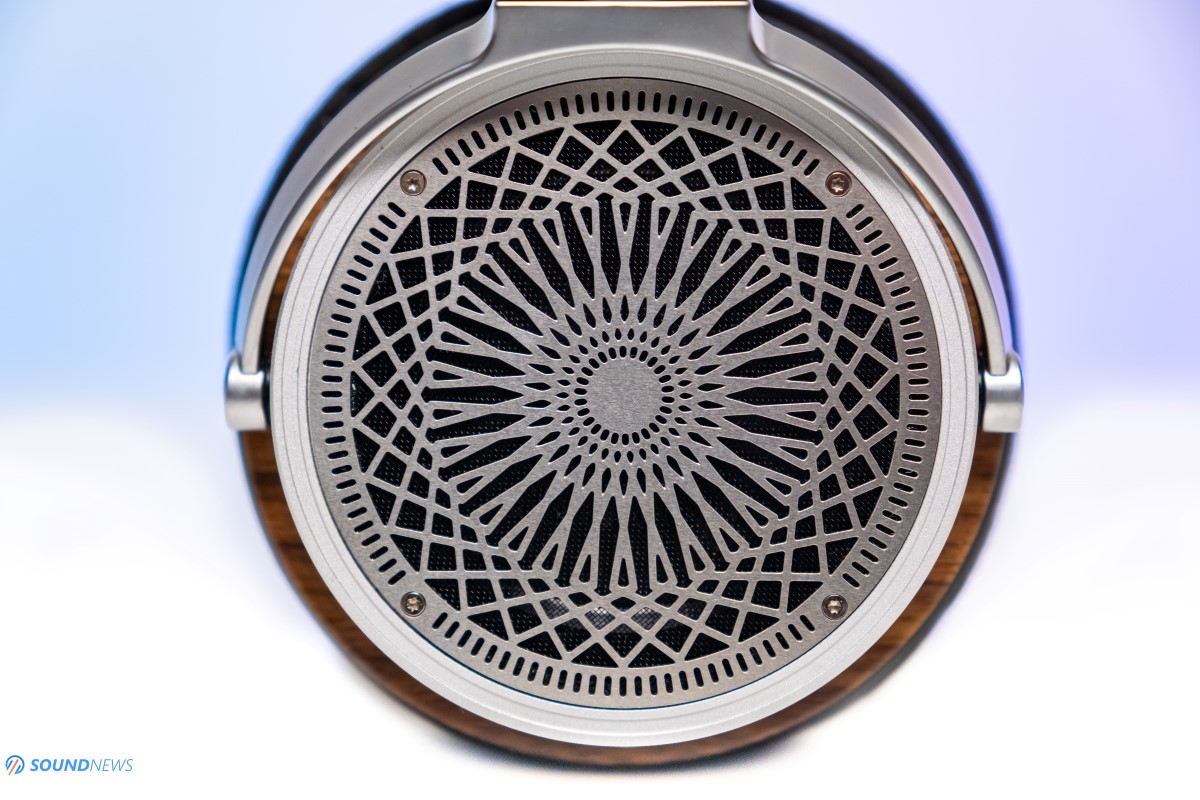
Comfort Level
The earpads have a velvety feel to them, padded with lots of memory foam. I find them soft and gentle enough to be used in long listening sessions. Those are quite thick, bulkier than those of Hifiman and Sennheiser, but thinner than those of Audeze and Erzetich. They fit around your head snugly and provide enough padding, putting just a little pressure around your ears. The pressure points are on top of your head and around your ears, anything else will not be touching your head. In their stock form there was a higher side pressure, but once I’ve adjusted them to my head size, everything went back to normal. I find them more comfortable than a pair of Sennheiser HD6XX, comfier than any Audeze planar, but less so compared to Meze 99 Classics and to any Hifiman headphones.
The ear cups are just moderately big, with an inner diameter of 90 mm and an outer one of 100 mm, these are neither big or small. Inside them a huge 50 mm driver will be playing music for you. These are marketed as over-ear open-back headphones and they indeed wrap my ears around nicely. These are slightly heavier than other headphones competing in the same price bracket, but in all seriousness, they feel pretty lightweight to me and quite comfortable, especially after listening to a 730-gram Audeze LCD-4 and Erzetich Phobos all day long. I don’t mind their weight, as I’ve used them for half a day without feeling any pain around my ears or on top of my head.

Tech Inside them
HarmonicDyne is describing them as Wired Hi-Fi Headphones in their user manual, but there is so much more going on the inside. We are dealing here with a 50 mm dynamic driver that is Beryllium coated making the driver lighter, faster, much stiffer, improving its rigidity and lowering their total harmonic distortion in the process. I will be measuring them in the latest chapters of this review and I’m very curious about their technicalities, make sure to read until the end for a full measurement analysis. Beryllium is not new in the audio realm, Focal is using them in their headphones and loudspeakers for a while, there are several IEMs using it and there are plenty of loudspeaker manufacturers that are using this particular material. Zeus has an impedance of 64 Ohms and a sensitivity of 100 db per 1mW of power, they should work pretty well with portable devices, but will surely sound the best out of a dedicated headphone amplifier, be it portable or not. It uses 3.5 mm connectors, so you could easily use your Hifiman / Meze / Kennerton and OLLO Audio cable if you please. It’s an open-back headphone and it is leaking a decent amount outside its cups, so it should be used mostly at your listening battle-station and forget about using them outside.
Unfortunately, I don’t know much about the driver thickness, about its voice coil, about its magnets and their strength so I will move directly to my sound impressions. Okay everyone, let’s hit some eardrums!
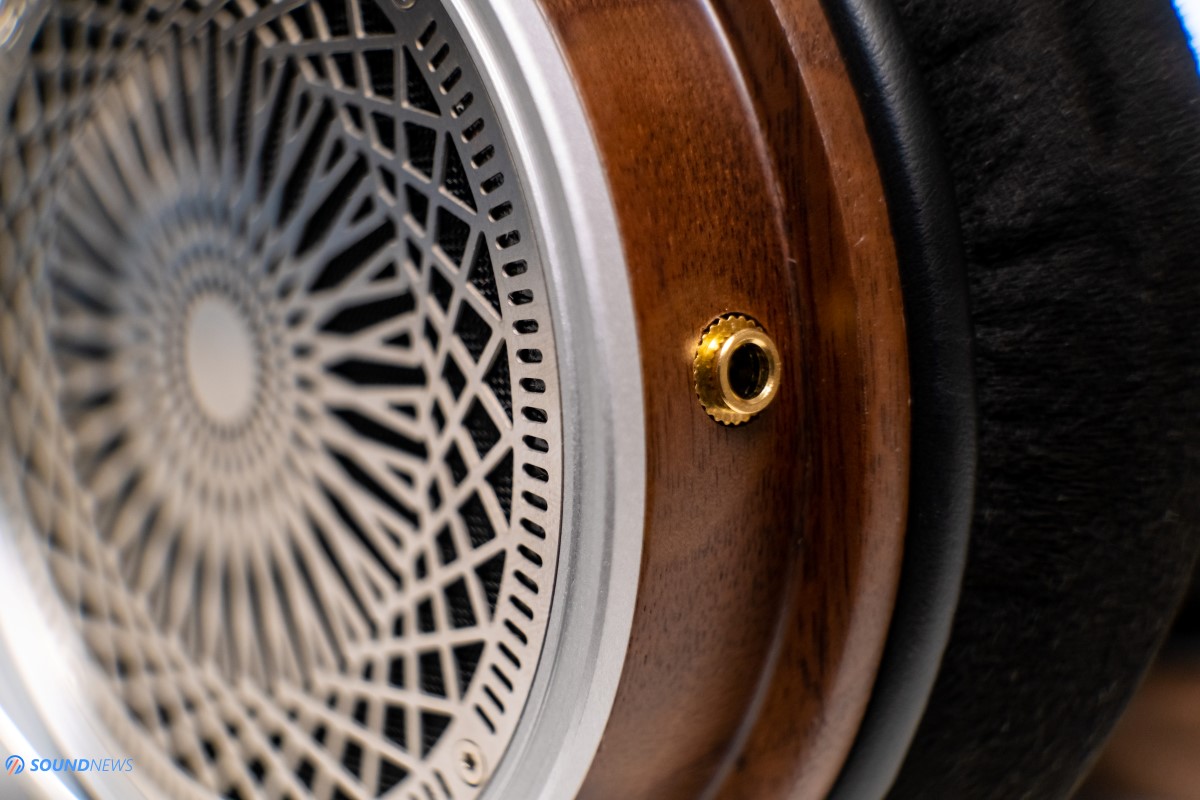
Sound Performance.
I. Preliminary Impressions
If you’re wondering how I’d describe them in a few words, that would be: speedy, punchy, engaging, hard slamming, airy sounding, well-spread around the listener with a strong bass delivery and with an excellent upper treble presence, having a great detail retrieval. It’s hard associating them with other headphones, there is a little bit of the Focal cleanness in here, but it’s more lit un top, there is plenty of bass to please a bass-addict and midrange although linear, it wasn’t sloppy at all. Most importantly it didn’t sound thin, lifeless, boring or bright to me, that would be a critical mistake with a flagship headphone.
The biggest advantages of the beryllium diaphragm were very obvious from the start: It’s a fast-moving driver all right, there is plenty of speed and impact, slam is impressive mimicking the sound of a well-driven planar driver. The mid-bass felt very present, bold, but clean and undistorted with plenty of layering around it.
A huge standout of this headphone for me was detail retrieval and transparency, it was almost unbelievable the amount micro-detail coming out of them. Zeus is a technical sounding headphone, it’s almost robotic at times, arranging everything in the scenery, positioning all the notes at their right places. Yet, there is a bit of naturalness and warmth too, not a whole lot of it, but enough to satisfy a Jazz and Blues addict like myself.
Another standout was how much higher they scaled with a higher performing DAC and headphone amplifier. These sounded considerably clearer, sharper and faster out of my reference setup compared to a portable DAP or to a midrange desktop setup. True balanced headphone amplifiers further increased the perception of air flying around me, those controlled them even better, made them snappier and utterly engaging in the process.
There is just a little bit of honkyness and shoutiness associated with a dip in the upper midrange, as those notes were felt farther from me and lesser in their intensity, shape and texture.
Apart from scale that wasn’t as grand and to the dip in the upper midrange, there is little to complain about these. Detail and resolution could put to shame headphones costing more and the same can be said about the rest of its technicalities.
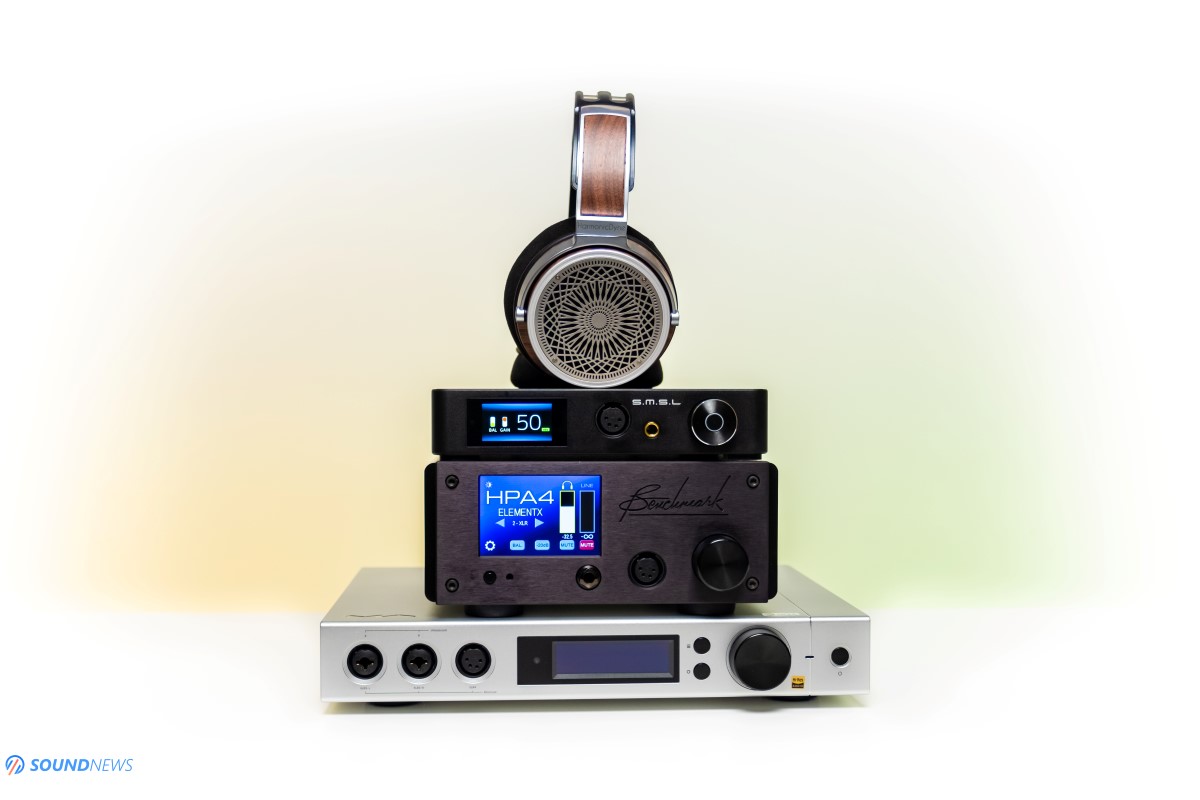
II. Power Requirements & Amp Pairings
I will briefly touch the subject of their sensitivity and how much power it is actually needed to fully drive these at maximum potential. According to the Benchmark HPA4 and to the microphones inside the MiniDSP EARS system, power requirements are by about ~12 dB higher compared to Kennerton Magni and Gjallarhorn, resulting in a sensitivity of around ~100 dB. Since these are as loud as a Fostex TH909 and Kennerton Vali, their sensitivity of 100 dB per 1mW of power mentioned in the manual is very accurate. Entry level planars like Audeze LCD-1, Hifiman HE400i are pretty much on the same level power wise, Quad ERA-1 is more of less the same also.
These sounded decent out of my smartphone, but of course far from excellent, they sounded better out of a Surface 7 Pro and considerably better out of dedicated portable audio devices that I’m testing of late. xDuoo XP-2 Pro and FiiO Q3 had enough juice to drive these to deafening levels and the same can be said about desktop headphone amplifiers. Even that uber-tiny Topping A50S was unleashing their maximum potential, with plenty of headroom left on tap, dynamics were sky high and control of the drivers was impeccable. Portable dongles like FiiO BTR5, HiliDAC Beam 2 or Shanling UP4 shouldn’t have issues driving these to very loud levels and of course mid-tiered portable DAPs didn’t have a slightest problem too.
With all that said, the absolute best pairing was with a Flux Lab Acoustics FCN-10 and with a Burson Conductor 3X Performance, followed by a more linear sounding Benchmark HPA4 and SMSL SP400. Both the Flux and the Burson were nicely improving their midrange performance and were widening their soundstage stage, taking care of the biggest flaws of this headphone. All these four units, offered a better control of the drivers, even better dynamics, a faster pace with the highest engagement factor out of all devices tested so far.
On a tight budget I would pair these with a small combo like Topping E30 and L30 and on higher budget, SMSL SU-9 powered by SH-9 should offer an audible improvement. If you want only the best out of them, look no further to Class-A amplifiers like those I’ve mentioned before that will take care of their obvious flaws and will further elevate their performance.
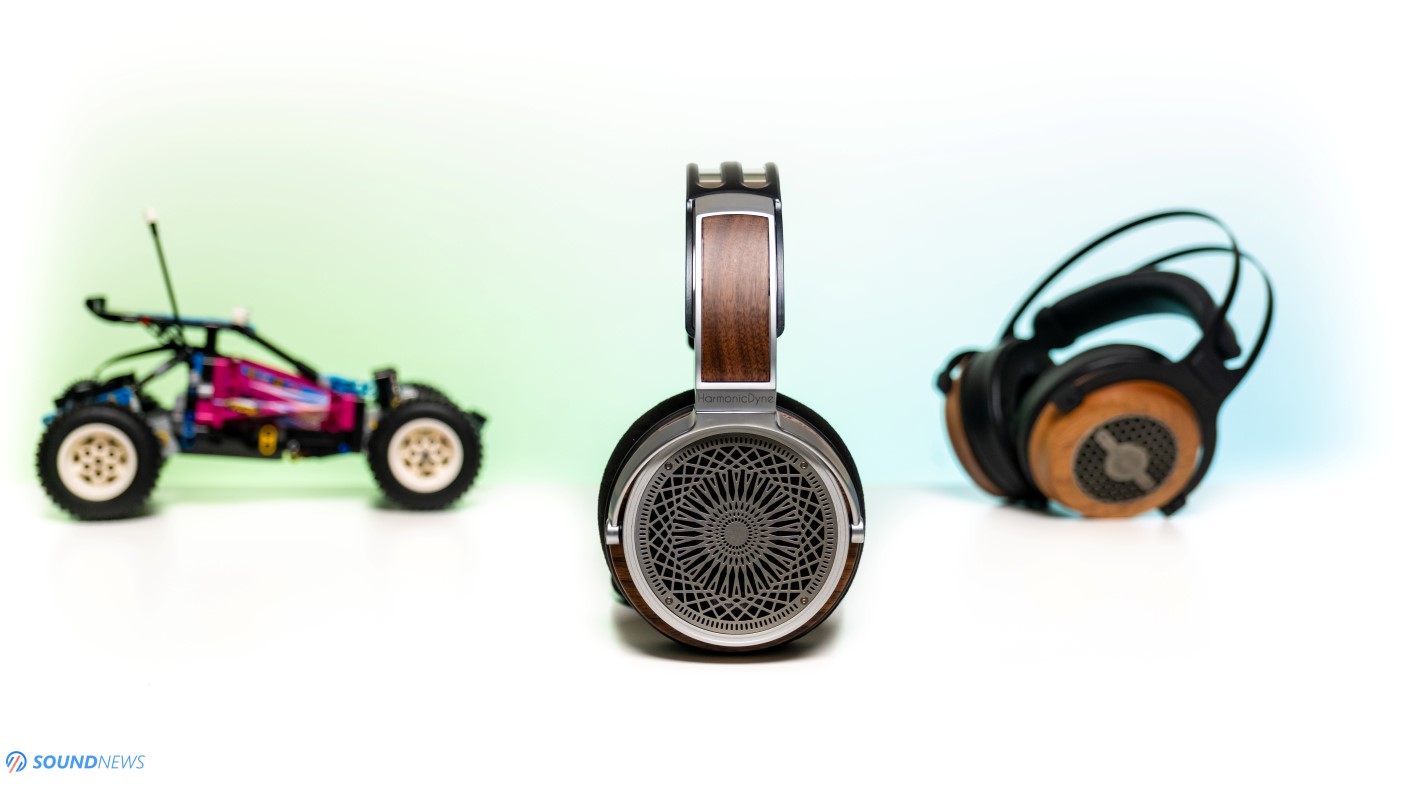
III. Transient Response
After listening to Chocolate Chip Trip of Tool (Tidal / Spotify) for several times and then a round of Spitfire by Infected Mushroom (Tidal / Spotify), it was very clear to me that I am dealing with a transient monster headphone and by that, I mean a headphone that can keep up with the most demanding tracks and deliver a thunder-like bass performance. When I’m listening to music and I’m liking when I’m hearing, my body will always send me clear signs, for me it starts with light toe taps, then with head-bangs, but if my hands are somewhere in the air, then there isn’t much to add then in comes to transient response.
Pair Zeus with a nimble sounding setup and those will unleash on you higher dynamics, speedy bass notes, decaying everything in a fast manner without leaving a trace of distortion or long decays. That’s right folks, Zeus works better with faster paced music as they are very good when it comes to things like acceleration and speed. These worked well with smooth and relaxed music also, but their fate is about offering a high engagement factor to the masses. A bigger surface area of 50 mm and the stiffness of Beryllium improved the bass heft and the slam that followed and no matter the songs that I was playing, these two thoughts always carried over to other tracks. Mid-bass always stood out even in songs where I would never expect it, which was surprising to experience.
Transient response is so far the best part of this headphone and I’m very curious how these will measure in terms of bass delivery and diaphragm decay, patience fellow headphone enthusiasts as everything will be revealed soon enough.
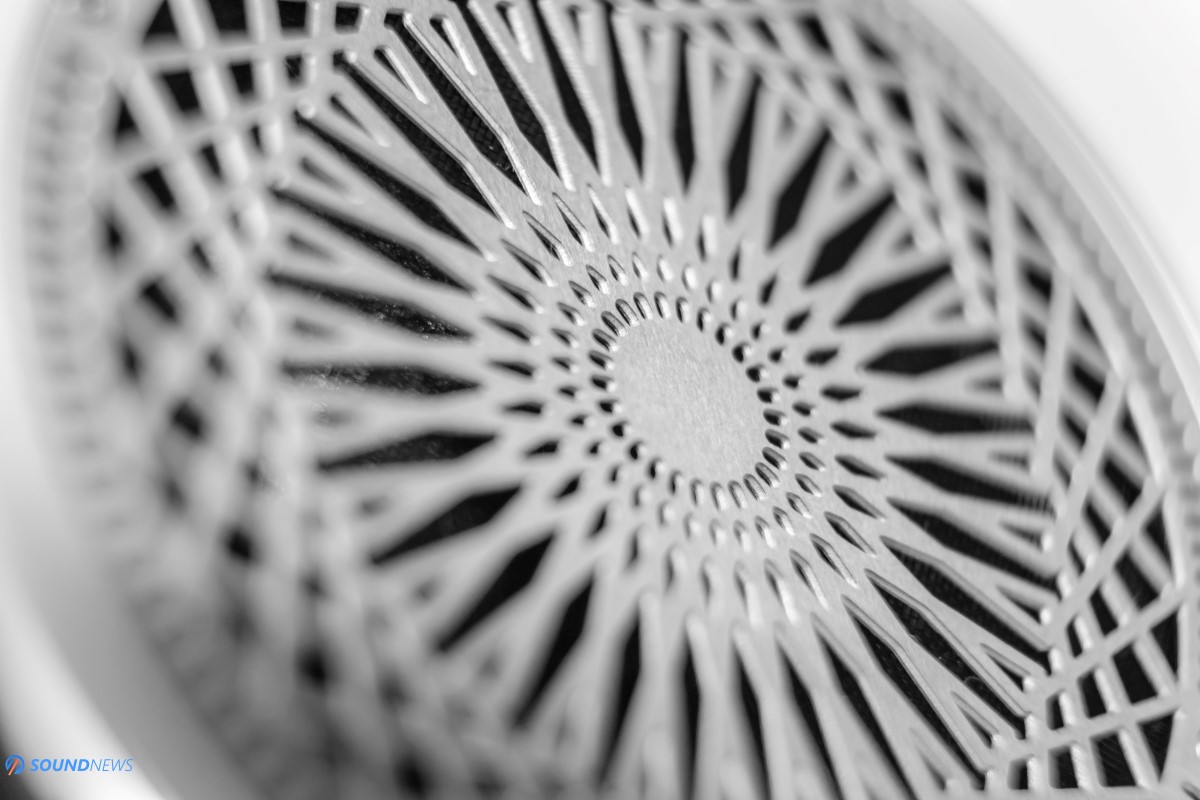
IV. Detail Retrieval & Transparency
A friend came over with a pair of Grado SR325e and Sennheiser HD650 two days ago, he was curious how those two will perform in a better headphone setup and he also wanted to try some planars experiencing for himself what’s the fuss about, shooting two birds with one stone. Later he gave Zeus a try and I’ve asked how much would he pay for these, he told at least $500 because they sounded better than his HD650. We were both surprised by the amount of detail coming out of them, HD650 felt mid-fi and quite muddy sounding by comparison, Grados were clearer by at least one notch, but Zeus was in another league entirely. I’ve heard more micro-details and small nuances had nowhere to hide with it. The cleanness of the Audiobyte HydraVox DAC + Benchmark HPA4 had a lot say in this equation and I was squeezing pretty much the best those three headphones could deliver.
As a small detour, I find them by a hair more detailed than Ollo S4X (€400), than Erzetich Mania (€1200) and about on the same level detail wise with a Kennerton Magni (€690). Sennheiser HD650 and lower tired headphones like Meze 99 Classics didn’t stand a chance and sounded smoother, muddier, with a layer of information being wiped clean from existence. If detail retrieval is important to you and you want the most transparent sound for your hard-earned money, as of right now there are two options: the Zeus and any of the Hifiman entry-level planars.
I was thinking about their clean sounding nature and came to the conclusion that a close to neutral frequency response with a slight treble boost always leads to a sensation of a breathable sound and since I just described the sound of Zeus, they always appear as clean, having sharp leading edges and a defined outline.
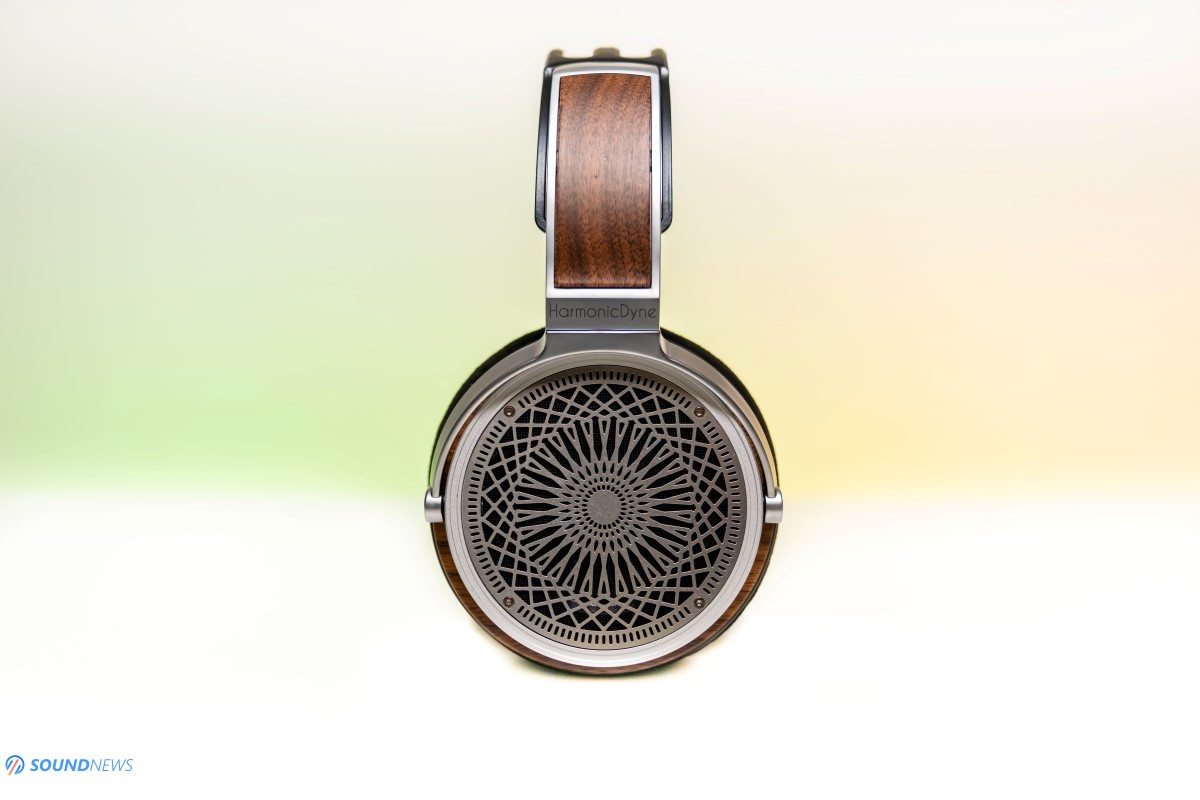
V. Soundstage & Depth
Being an open headphone by definition, as you could expect the sound is not happening inside my head, but flows somewhere outside calling for my attention. I hear it well layered and placed accordingly in the scenery with some air around each and every note. With all that said, I strongly believe this part alone is the biggest downsize of the Zeus. Although excessive ringing behind the driver will go outside, increasing the sensation of a breathable sound, Zeus isn’t entirely a very open sounding headphone and reminds a lot more about semi-open headphones like Ollo’s S4X Reference. Soundstage is not particularly wide and isn’t thrown too far away from the listener, so expect a cozier sound, like you just switched places with someone in front of you in the auditorium. It is only by a hair wider sounding comparing to Audeze LCD-1, Sennheiser HD6XX family of headphones and Ollo S4X Reference also felt tinier and smaller when it comes to scale.
Since its drivers are moving quite fast, muddiness would never happen, thus improving the imaging and pin point location of every note, resulting in a much nicer depth rendition. I was easily appreciating that some sounds were closer and others traveled a longer distance before reaching me. I could also focus on a single note in a crowded track pretty easily, so again depth and imaging felt being on a high level.
Overall, I find it good when it comes to depth, imaging and less so when it comes to soundstage size.
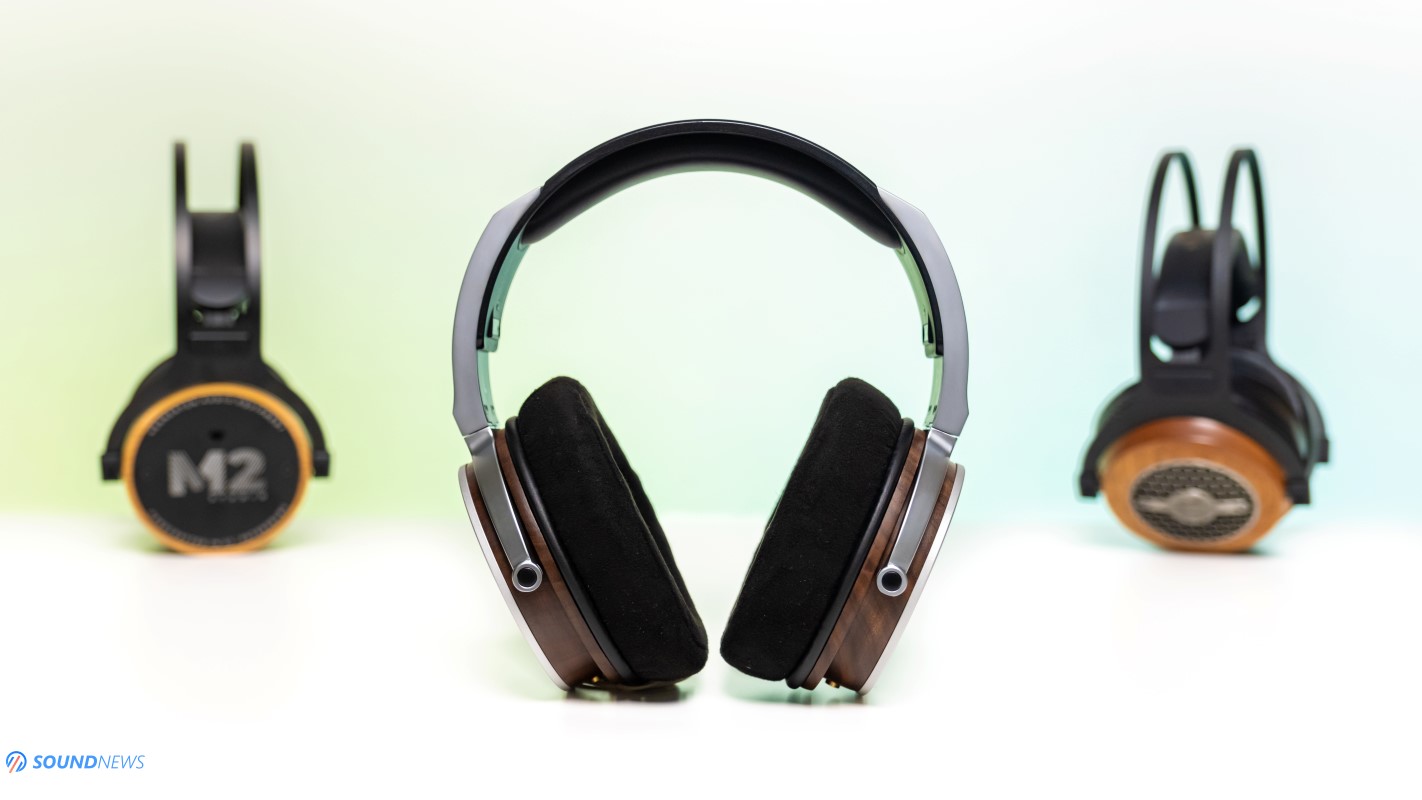
VI. Frequency Response
A. Bass
It is a little bit weird experiencing such a good bass performance out of an open-back dynamic headphone, but I still didn’t forget that extremely impressive Fostex TH-909 that forever changed the way I’m looking at dynamic headphones. While Zeus is obviously not that good compared to Fostex TH-series headphones that are known to be bass gods, Zeus still impresses when it comes to bass delivery, not only in terms of quantity, but also in terms of quality. Sub-bass is recessed by a little, nothing that I would describe as worrisome, there are still plenty of 30 Hz notes that I’ve heard with my electronica, but not as many 20 Hz notes. From 30 Hz and higher it becomes linear, much more defined and powerful. Bass notes were always fast, articulated, punchy and engaging, but also clean, layered and detailed. Overall it has definitely a high-quality type of bass.
Mid-bass is the best part of this headphone by a long shot, it is so present in my tunes that I’m hearing it first and then everything else. It is elevated by a hair, adding warmth, weight and that is the sound I like the most, since it always lifts my mood. Zeus seems to be following the Harman curve in terms of FR and that is a good thing in my book.
B. Midrange
Zeus has a clean midrange performance; it starts very strong but it isn’t elevated at all. Its neutral to me and doesn’t stand out very often. Voices were rendered pretty nicely with an unmistakable pitch between male and female voices, but in terms of frequency response this is probably the least impressive part. The upper midrange starts rolling-off and sometimes gives an impression of shoutiness, as if some sounds lost their intensity and are playing through a pillow. When I moved to my older jazz tunes that are extremely rich in the midrange section, it was clear to me that Zeus wasn’t soul grabbing to me, there wasn’t that meaty voluptuous sound that I’m in love with my Audeze and Kennerton headphones. It felt by a hair drier, but not to a point of calling them thin or lifeless, because Zeus are not like that at all. It has more of a linear type of midrange that leaves the rest of the spectrum shinning brighter, moving all the spotlights toward bass and treble areas. Nonetheless, I enjoyed my blues and jazz, acoustic music sounded good too, only sometimes I was missing a bolder and heavier tonality of high-end planars, but you can’t really have them all at this price point.
C. Treble
Its treble performance is quite interesting, it’s far from linear and it sometimes feels like a roller-coaster, but in a good way and let me explain what I mean by that. The most sensitive part of our hearing, somewhere around 4 to 6 kHz is having a slope so that brightness will never make an appearance in my tunes. I can listen to Zeus all day long and listening fatigue will never occur, mostly because that 4 to 6 kHz region is lowered in its intensity by few dB, so I wouldn’t clench my teeth when a bright track would start playing. Immediately after that region, it plunges high and it sees a rise that increases the perception of detail and air in my music. Some of the best headphones on the market have a very similar tuning when it comes to treble and I consider that HarmonicDyne did a great job when it comes to tuning. Upper treble is very good, it is detailed, defined and very fast, there is plenty of zing and bite in my tunes, but without triggering my brightness OCD. MiniDSP E.A.R.S recorded driver movement even past 20 kHz, so we are definitely talking about a good treble performance.
Overall, Zeus seems to be targeting the Harman OE 2017 curve, that focuses mostly on a great bass and treble performance at the cost of a recessed upper midrange and I’m fine with that.
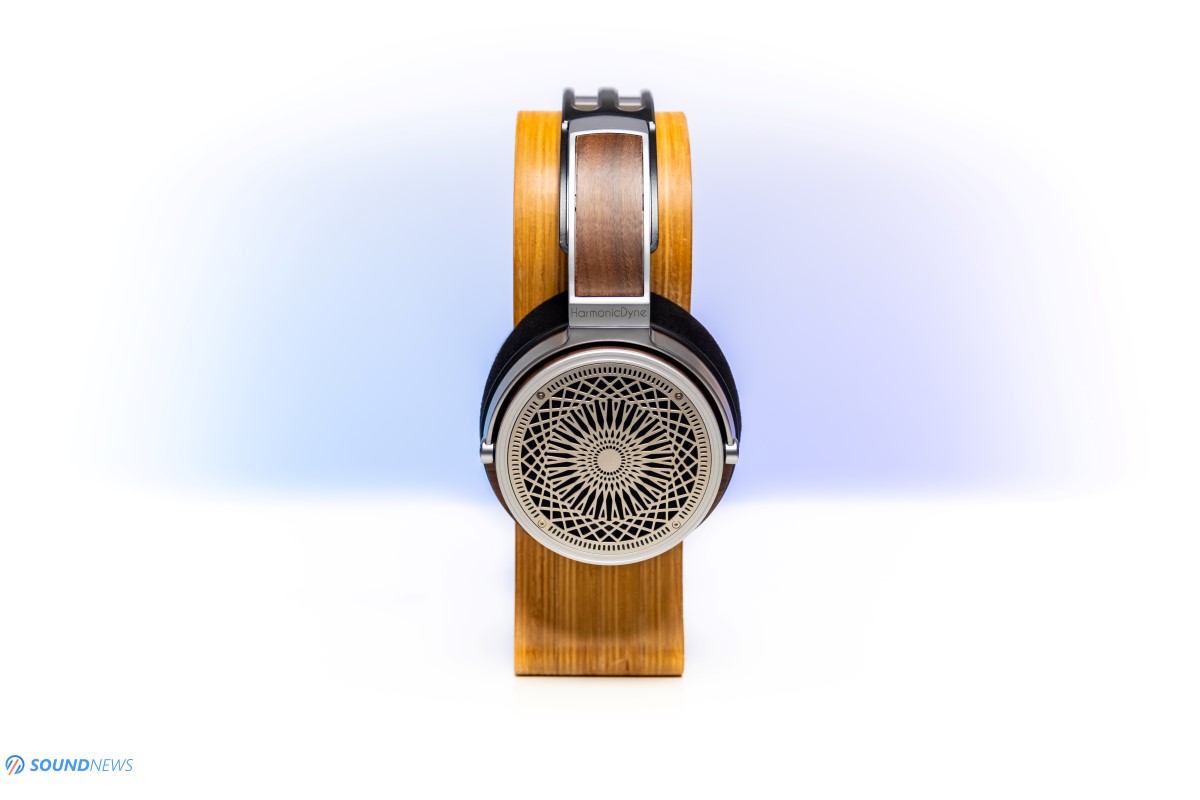
VII. Measurements
After offering my full-blown subjective opinions, it is time to put them under a magnifying glass and see how they really perform. When it comes to measurements, my best friend is still the Benchmark HPA4 as it is as linear as headphone amplifiers could ever be and I resumed at using the Matrix Audio Element X as the main DAC for the job. The measurement rig was the MiniDSP E.A.R.S. calibrated with HPN (Original Headphone Compensation) files. Do note that MiniDSP E.A.R.S. is not following any IEC standards, meaning that my readings can’t be used as reference measurements or anything like that, I’m doing them only to get a general idea about their sound signature.
The first issue that I’ve encountered is that the ear pads are staying exactly on top of the metal screws around the silicon ears of the MiniDSP EARS system, thus breaking the seal and recording a non-representative frequency response. I re-measured them more than 15 times after finding the perfect spot on the test jig, no side-pressure was applied on the earcups as they stayed in their natural position.
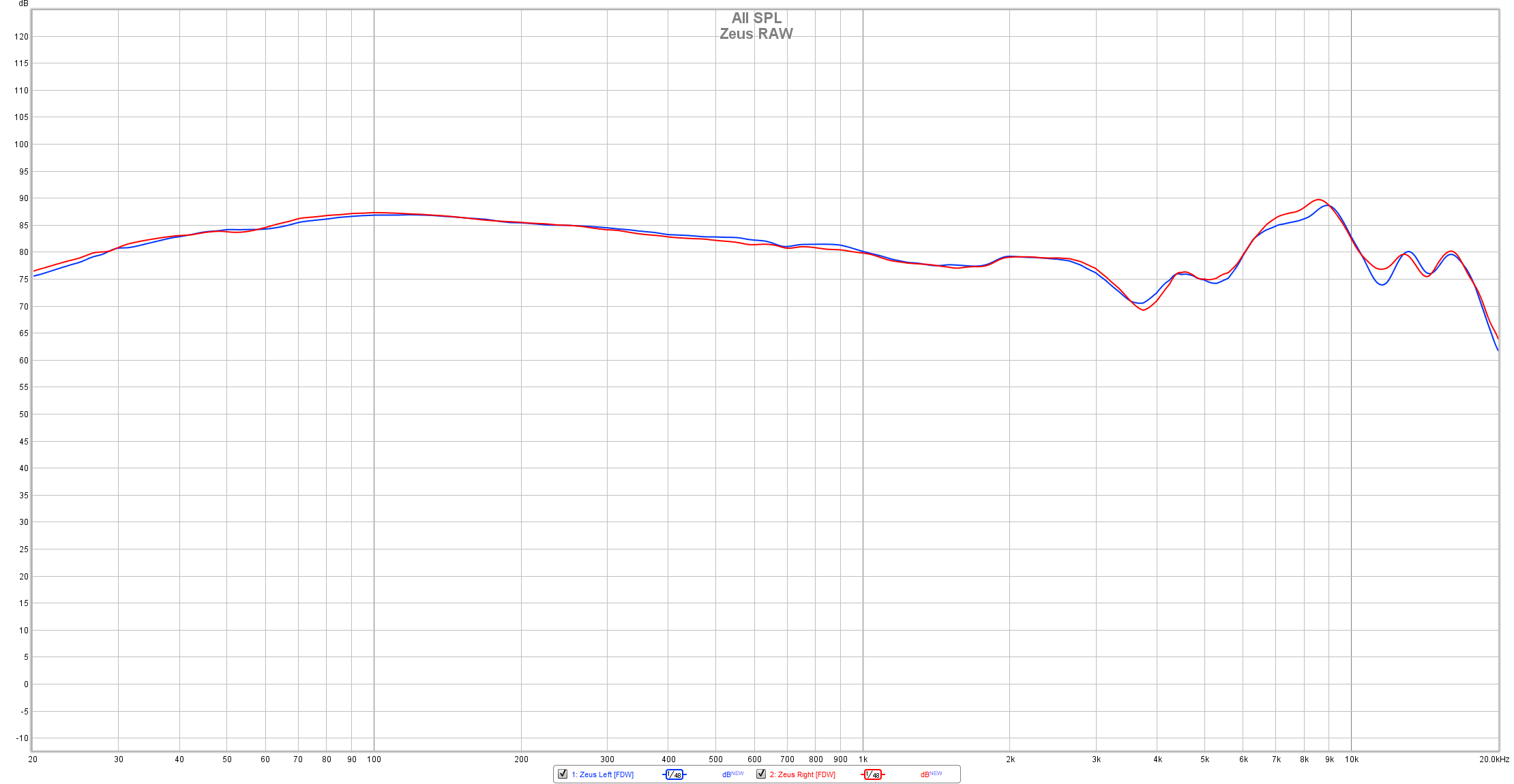
This is their RAW measurement without any smoothing applied. I’m very impressed by the driver matching especially at this price point, there is only a very small driver deviation that I consider negligible. Some costlier headphones had much worse driver matching so I can only congratulate the HarmonicDyne team for putting a higher importance to driver matching.
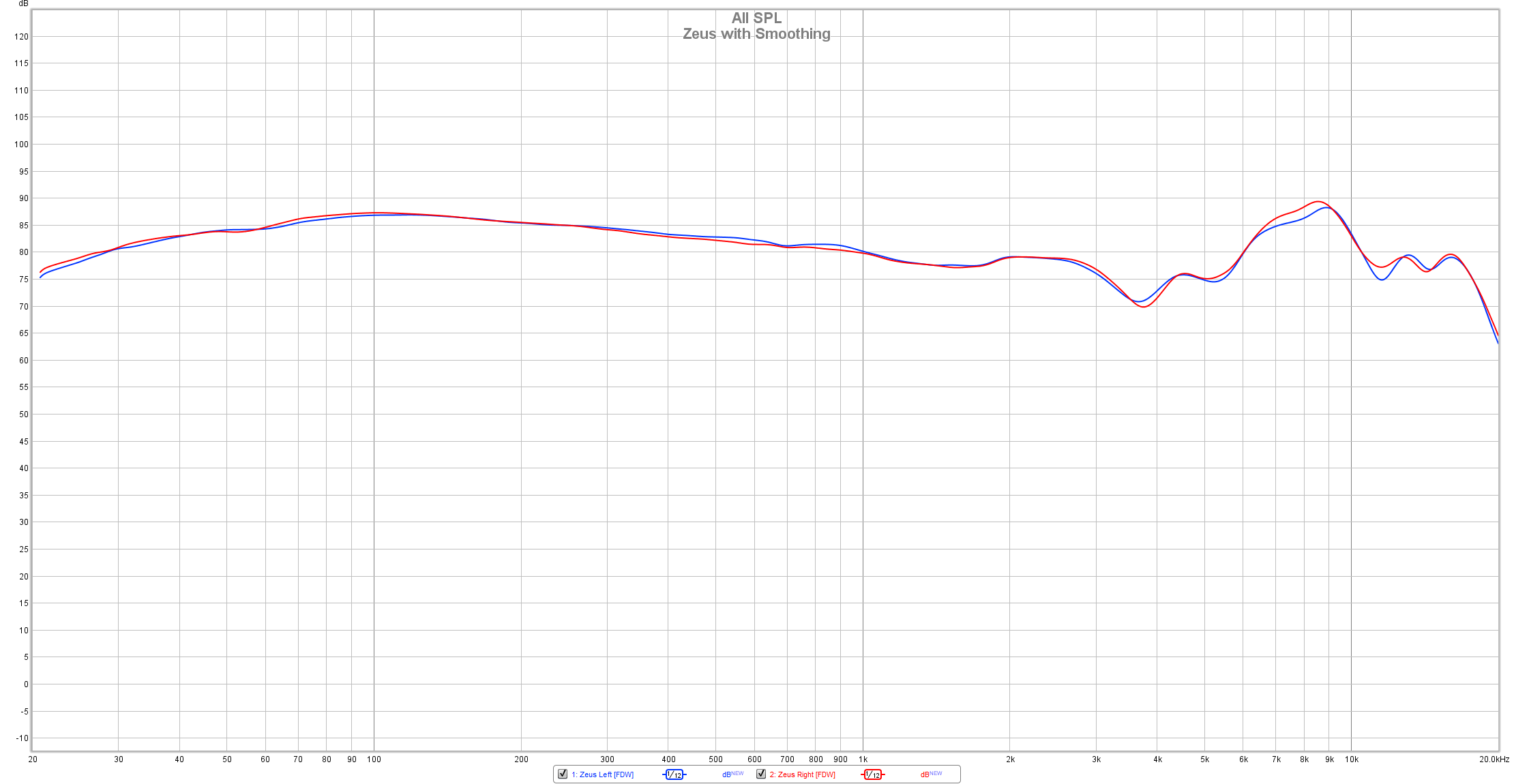
Applying a 1/12 smoothing, I am getting this graph and as you can see, the sub-bass is good, mid-bass is absolutely perfect clearly standing out, midrange is mostly linear but it sees a gentle slope until upper-midrange is hit with a roll-off. Treble is calm and relaxed in the most sensitive part (between 4 and 6 kHz) and immediately after that it gets higher momentum and becomes much stronger and defined. There is a lot of presence in the top octave that gives an impression of a detailed and transparent sound. As you can see, Zeus was tuned towards an enjoyable experience, in detriment of a super-linear, super extended frequency response.
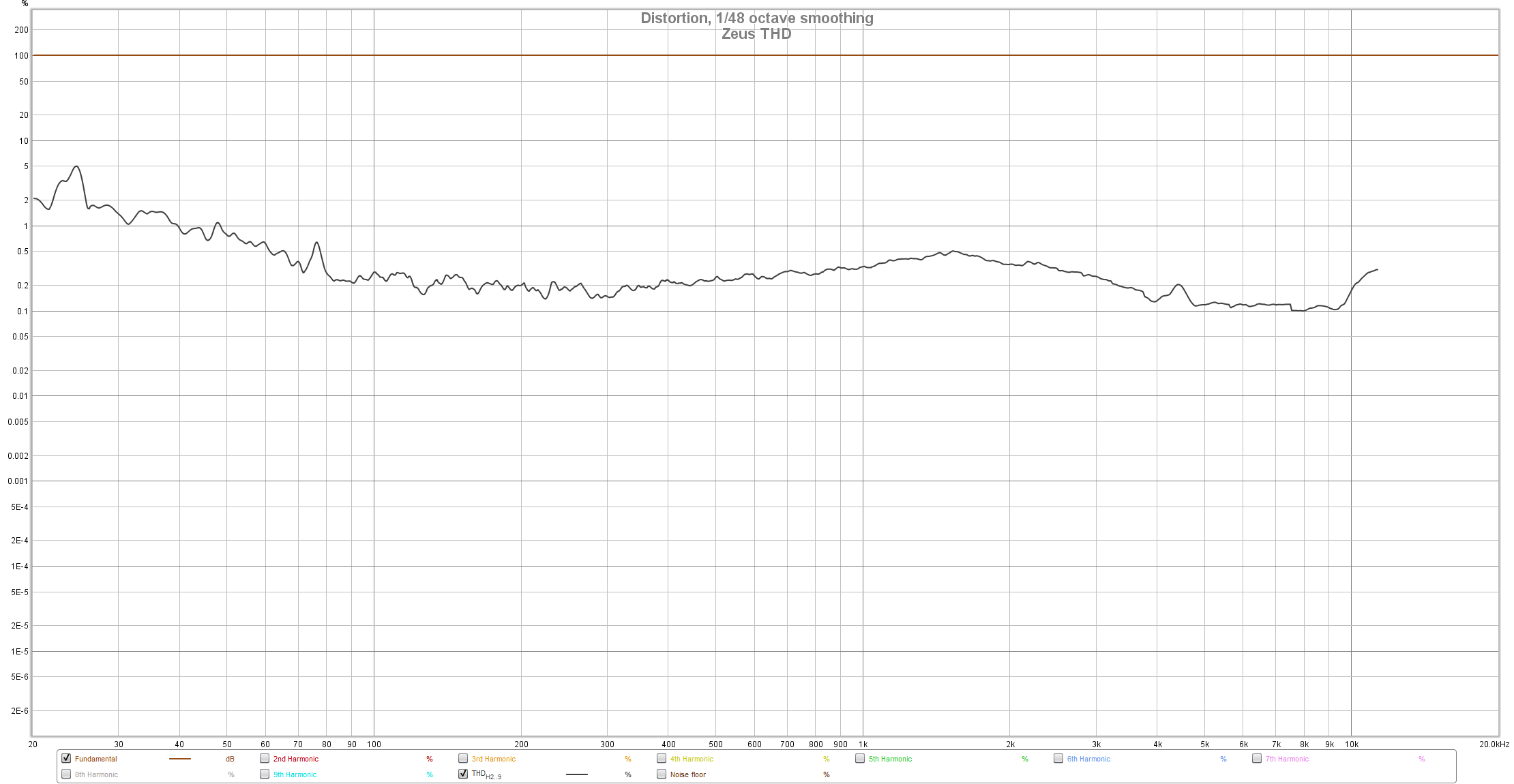
Considering we are dealing with an open-back dynamic driver, its THD (Total Harmonic Distortion) reading is really good, sub-bass is just by a hair dirtier, but everything else stays somewhere between 0.2 and 0.5% which is really good performance.
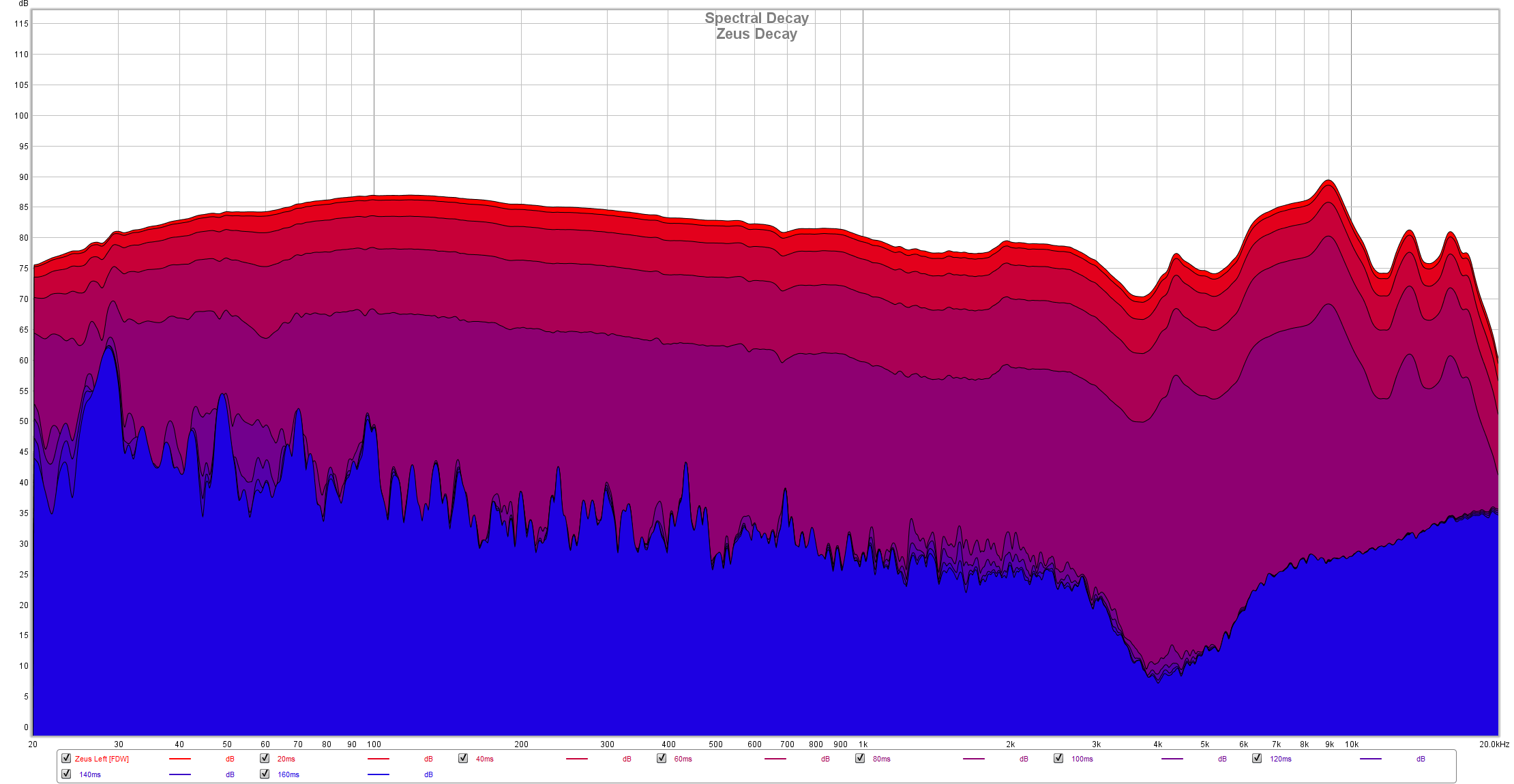
Decay shows a very fast recovery of the driver, much faster than that of Erzetich Mania for example that costs a lot more. This reading is strongly reinforcing my impressions of a fast-moving driver.
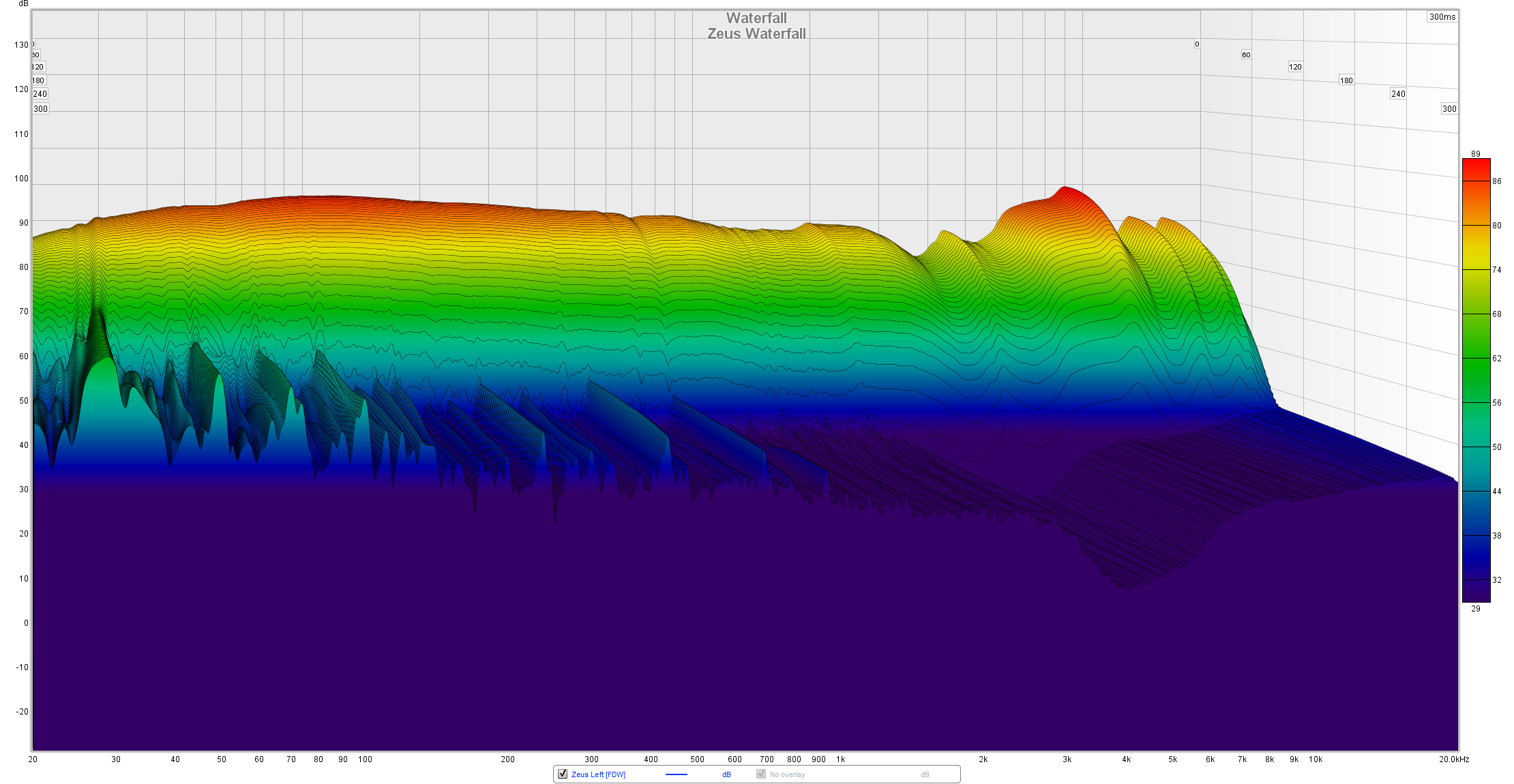
Waterfall is looking good too, you can better see the hot spots in the FR and again I’m not spotting any weird driver movement in the FR. You can also spot the hotter parts in the FR and as you can see bass and treble are standing out the most.
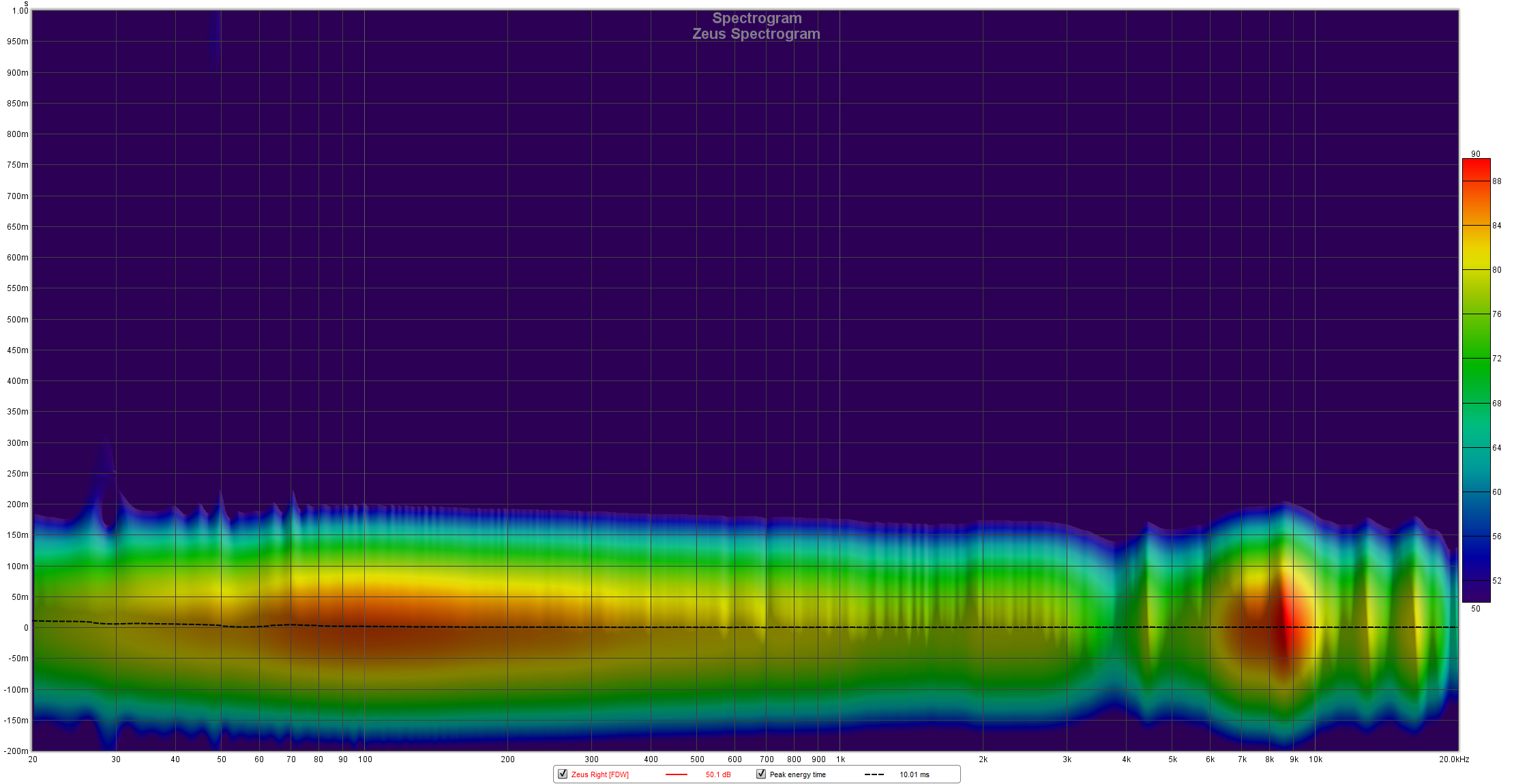
Spectrogram shows a minor ringing of the driver in the bass, but nothing to be worried about.
Overall, I recorded a low THD, a perfect driver matching, a super-fast decay and a smooth waterfall.
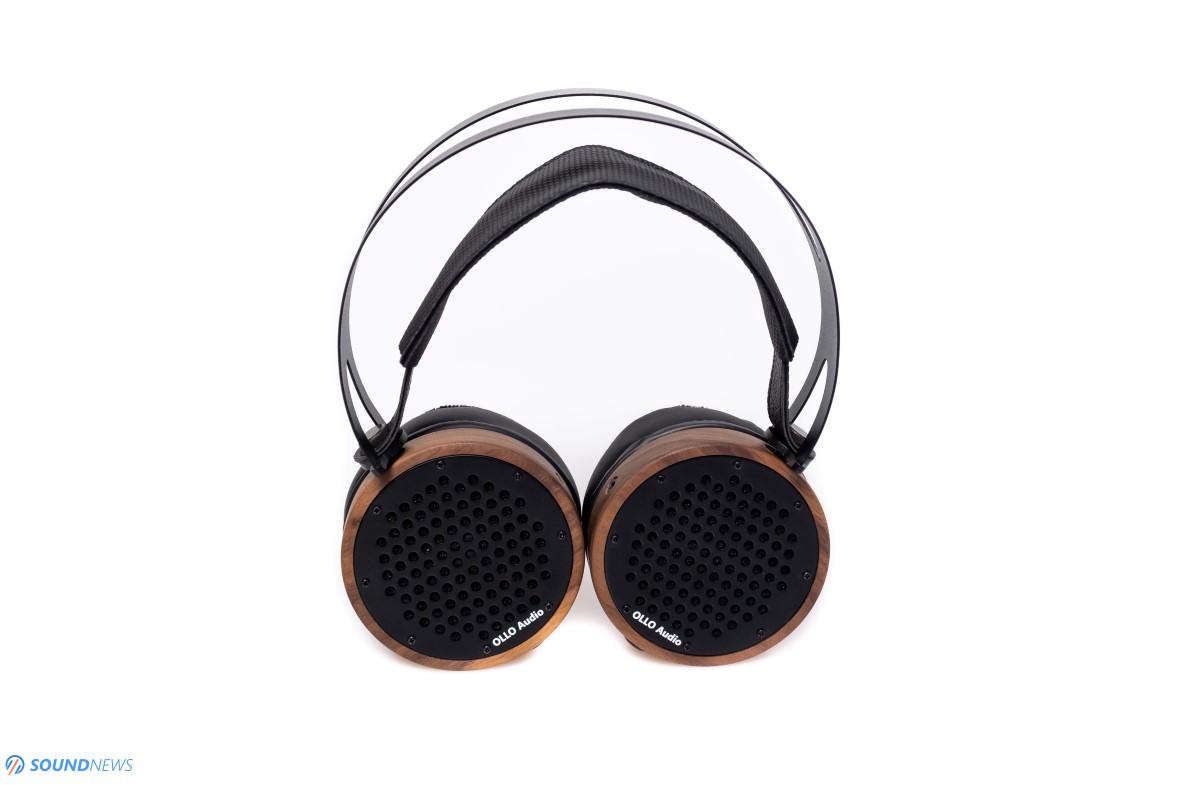
VIII. Comparisons
HarmonicDyne Zeus ($350) VS OLLO S4X Reference (€399)
The most obvious comparison would be with Ollo S4X which is a semi-open headphone that I’ve reviewed last year, it is a really good monitoring type of headphone that I’m enjoying immensely for quite some time.
I find them both equally well made, using only higher quality materials as stainless steel and walnut wood. Both have symmetrical designs, the same headphone connectors and driver surface. The earcups of the Zeus are larger and are better hugging my ears and its earpads are plushier and softer making Zeus a better headphone in long listening sessions. Their weight is almost the same, Zeus in only by 30 grams heavier, but you can’t feel that after going back and forth with both. Their sensitivity is very similar so I didn’t need to readjust the volume every time I was swapping them around.
What is quite fascinating is how different both could sound with the same driver surface and working principle. S4X appeared as warmer sounding to me, having a much higher roll-off in the treble, especially at 6 kHz it would scare away brightness for good, but would also make those cymbals and bells less clean, less defined, thrown to the backstage with a thin layer of veil over them. S4X were slightly better when it came to sub-bass definition and presence, slightly better in the midrange department, but considerably worse in the treble region that would lack brilliance and sharpness.
It was unusual seeing Zeus beating the S4X at pretty much any measurements: Zeus driver matching is much better, its THD is lower and its spectral decay is faster. I’ve also recorded a higher ringing of the driver on S4X especially in the bass, that wasn’t present on the Zeus.
All those measurements directly impacted what I was hearing, as Zeus sounded clearer, had a higher level of detail retrieval and transparency. Surprisingly, Zeus also sounded wider and deeper, offering a better feeling of a grand scale while listening to live recordings, it was a complete 3D experience with Zeus, that felt somewhat 2.5D with S4X.
Transient response was more or less the same as both units are excelling in this department, offering a very fast driver movement, a fast decay of the notes, sounding snappy and punchy most of the time.
Overall, Zeus felt as a more technical sounding headphone, unearthing a higher level of detail while also sounding bigger and wider on all axes, it had more information up top that would further increase the perception of more air around the notes and of a higher detail retrieval.
S4X had its strengths also, offering a slightly better sub-bass performance and more definition in the upper midrange. In the end it would come down to personal preference, but don’t forget that Zeus is more affordable and is more technical sounding.
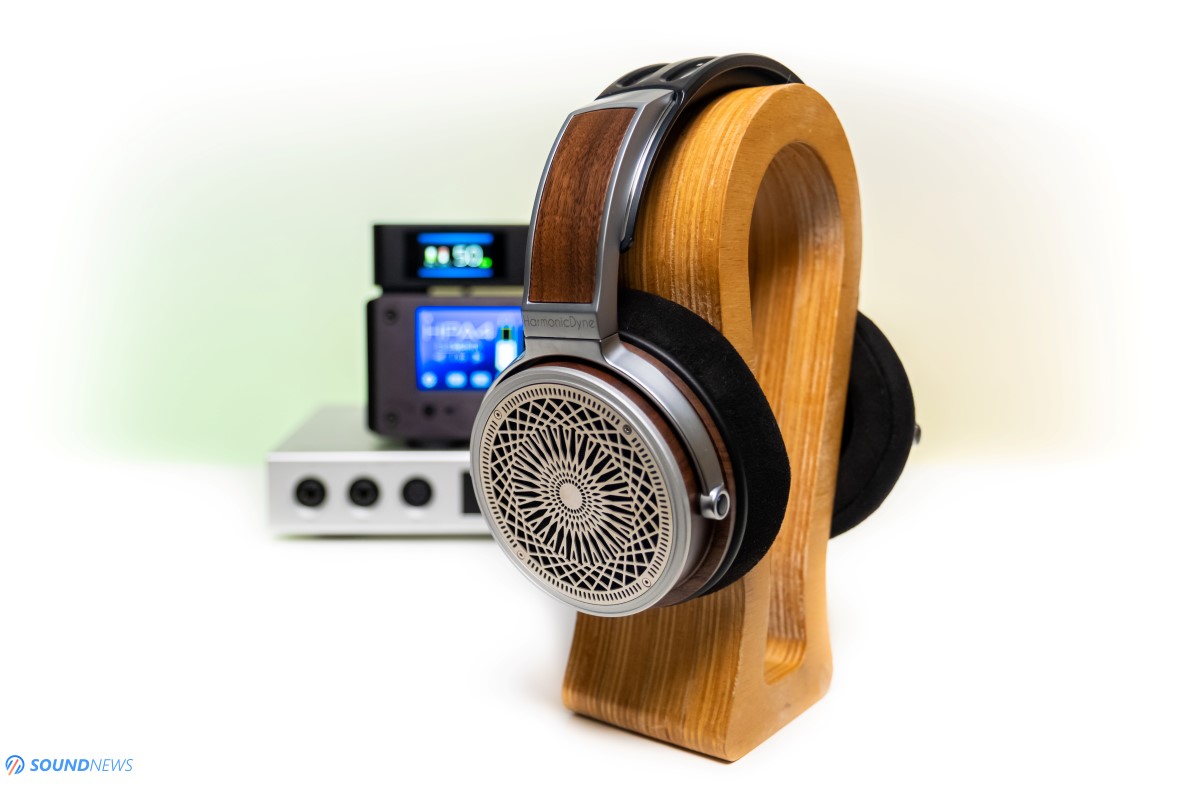
Conclusion
This is my first contact with HarmonicDyne headphones and hopefully it will not be my last. I never tried their first-born Helios, but Zeus looks, feels and sounds like a proper Hi-Fi headphone to me from any point of view. I had my doubts when I’ve received them, but after putting them on and listening for several days, I completely changed my mind. After finishing a full set of measurements, I was again stunned by their technicalities and excellent driver matching. Sure enough, it has some minor drawbacks like a limited soundstage size and small deviations in the frequency response, but everything else performed at a high level. Up until this point I didn’t experience the same level of performance at $350 and it wouldn’t be fair without awarding them for that, they deserve our highest one, so Gold award it is.

HarmonicDyne deserves it fully and I look forward to their next headphone developments.
Zeus was kindly provided by HiFiGo and it can be purchased from their web-store by following this link.
PROS:
- Amazing packaging, awesome cable quality
- Unique build quality with an unmistakable look
- Good comfort levels
- Great tonal balance
- More technical than full-bodied sounding
- Enhanced detail retrieval, challenging much pricier headphones
- Speedy, punchy and engaging – excellent dynamics
- One of the nicest mid-bass at its price point
- Extended treble performance
- Impressive set of measurements
- Reference sound at an affordable price
- One of the best values of right now!
CONS:
- Limited soundstage size
- Few dips in the frequency response
ASSOCIATED EQUIPMENT:
- DACs: Audiobyte HydraVox + HydraZap, Matrix Audio Element X, Flux Lab Acoustics FCN-10, Burson Conductor 3X Performance, QLS QA390
- DAPs: Shanling M6, FiiO M15
- Headphone Amps: Benchmark HPA4, SparkoS Labs Aries, Flux Lab Acoustics FCN-10, Burson Conductor 3X Performance, LittleDot MKIII SE, SMSL SP400, SH9, Topping A50S
- Integrated Amps: KECES E40
- Power Amps: KECES S300, Kinki Studio EX-M7
- IEMs: FiiO FA9, FH7, Meze Rai Penta, Rai Solo, LittleDot Cu KIS & lots of other lower tiered ones
- Portable headphones: Sennheiser Momentum 2, Meze 99 Classics
- Full-sized headphones: HarmonicDyne Zeys, Ollo S4X Reference, Hifiman Susvara, Hifiman Arya, Audeze LCD-4, Erzetich Phobos, Erzetich Mania, Quad ERA-1, Kennerton Wodan, Magni & Gjallarhorn
- Loudspeakers: KEF Reference 3
- Interconnects: QED Reference (x2), Aune AL3
- Speaker cables: Kimber PR8, Audioquest Type4
- Power Cables: Isotek EVO3 Premier (x3)
- Balanced Isolation Power Conditioners: PLiXiR Elite BAC400
